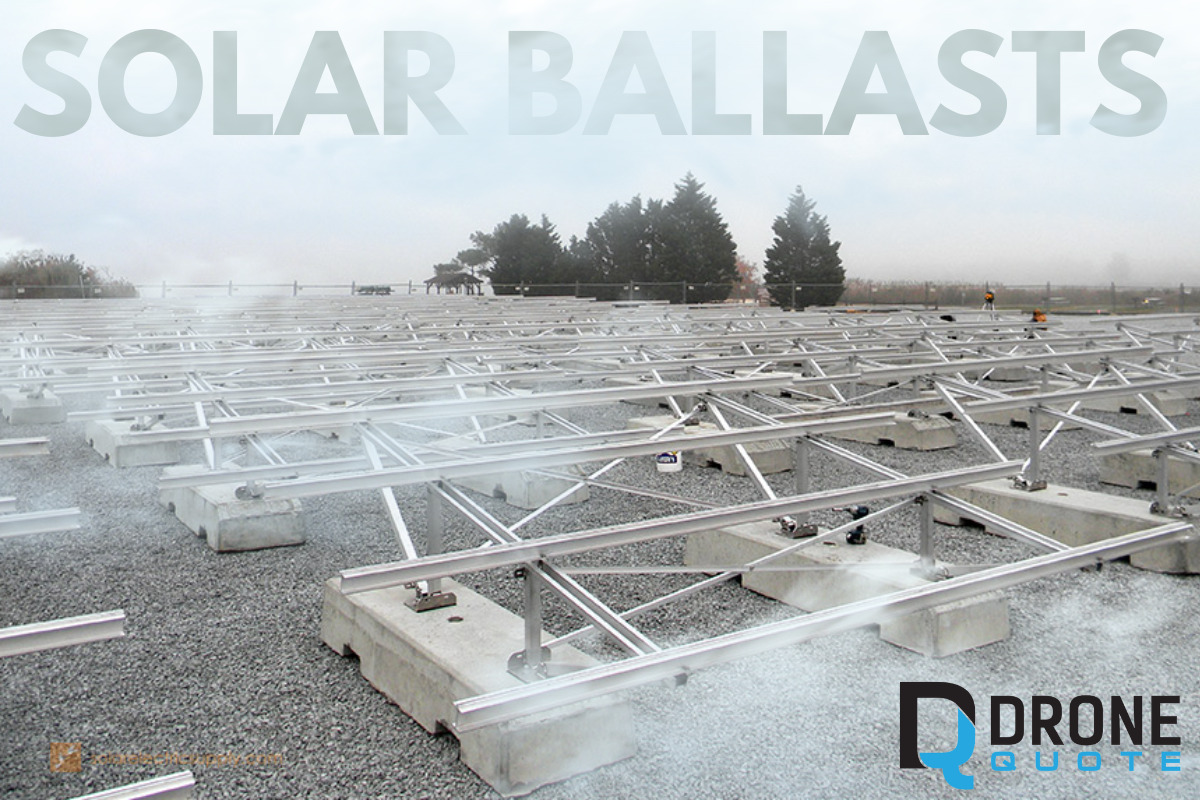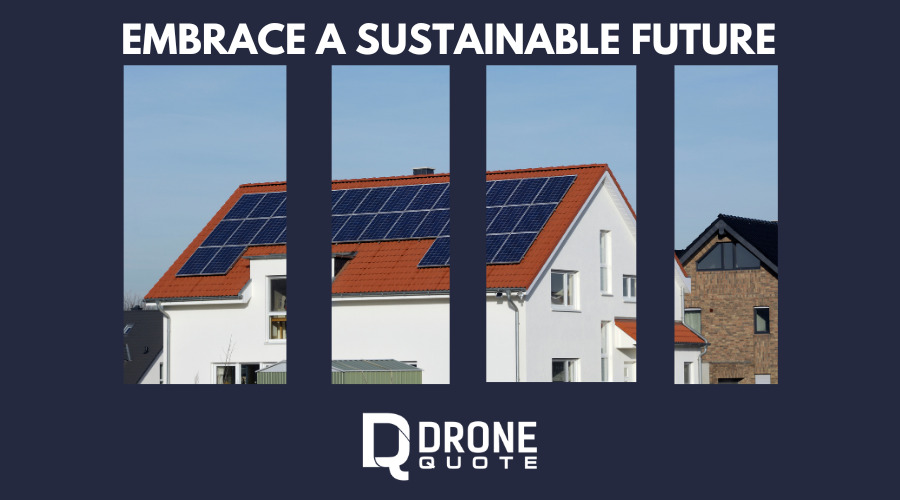Introduction
Considering a switch to solar power but lost by terms like “solar ballast”? We get it, and we’re here to help! Understanding this technical jargon is vital to maximizing your solar installation.
After all, they directly impact the stability of your panels against rough weather conditions, be it strong winds or heavy snowfall, not even sparing seismic activities. Stay with us as we unravel the mystery behind solar ballasts and lay down how they guard your investment for years to come!
Key Takeaways
| Solar ballast is a weighted material, usually made of concrete blocks, used to stabilize solar panels on flat roofs. |
| Ballasted systems are suitable for homes with flat roofs as they do not require penetrations or mounting. |
| Solar ballasts prevent wind lifts and provide stability to the solar panel installation. |
| Professional engineering approval is necessary for installing solar ballasts. |
| Choosing high-quality materials and regularly inspecting ballasts for signs of wear or damage is essential. |
| Selecting the right solar ballast system would take different factors and considerations. |
What is Solar Ballast?
Solar ballast refers to the weighted material used in solar panel installations to provide stability and prevent wind uplift. They are essentially concrete blocks strategically on or around the solar panels.
Definition and purpose
Solar ballast is a vital part of installing solar panels. Special concrete blocks are one of the main components. The job of the solar ballast is to hold the solar panels in place. They work against wind, snow, and shaking from deep in the earth that could move them.
This helps keep your solar panels safe and long-lasting. Using a solar ballast also makes it easy to put in and take out your solar panels as needed. Understanding this can help you pick the best way to set up solar panels!
Composed of concrete blocks
Solar ballasts are sturdy concrete blocks. These blocks provide stability and support for solar panels on flat roofs. They are cemented to the roof’s surface to keep the discussions in place even when strong wind or other forces are at play.
The weight of the concrete blocks helps counteract these forces, ensuring that the solar panels remain secure and not dislodged easily. Concrete blocks used as solar ballast come in different ratings and quality levels, so it’s essential to work with a reputable solar contractor who ensures high-quality materials are used for your installation.
Solar ballasts made of concrete blocks, installed securely on flat roofs, help hold solar panels firmly in place despite external forces like wind or snow. This provides stability and prevents damage to the panels over time.
Advantages of Ballasted Systems
Ballasted systems have several advantages. They are particularly suitable for homes with flat roofs as they do not require any penetrations or roof mounting. Additionally, ballast prevents wind lifts, providing stability to the solar panel installation.
However, it is essential to note that ballasted systems require approval from professional engineers and can degrade over time due to weather conditions and exposure to UV rays.
Suitable for homes with flat roofs
Ballast-mounted solar panels are an excellent option for homes with flat roofs. These special-purpose concrete blocks are on top of the roof’s surface, providing stability and preventing wind lifts.
They ensure the solar panels stay firmly in place, even during strong winds or storms. This makes them a reliable choice for homeowners who want to harness solar energy but cannot penetrate the roof for installation.
With ballast-mounted systems, homeowners can enjoy the benefits of solar power without compromising the integrity of their flat roof structure.
Prevents wind lifts
Solar ballasts are essential for preventing wind lifts. Wind can generate strong forces that may cause solar panels to lift or shift, potentially leading to damage or reduced efficiency.
By using concrete blocks as ballast, the weight keeps the solar panels firmly in place and counteracts the force of the wind. This stability ensures your solar panels stay secure and function optimally, even during windy conditions.
So, with a reliable solar ballast system in place, you can have peace of mind knowing that your solar panels are protected against wind lifts.
Requires approval from professional engineers
It’s important to note that installing solar ballasts requires approval from professional engineers. This is because the stability and safety of the entire solar installation depend on the expertise of these engineers.
They will assess factors such as wind resistance, snow resistance, and seismic activity to ensure that the ballasted system is securely anchored to your roof. Their approval ensures the installation meets all necessary standards and regulations for a reliable and long-lasting solar power system.
So, when considering installations, work with qualified professionals who can provide this approval for your peace of mind.
Can degrade over time
Solar ballasts can degrade over time, like any other materials exposed to the elements. UV radiation, extreme temperatures, and moisture exposure can gradually weaken the concrete blocks used as ballast structures.
This degradation may lead to decreased stability and potential issues with panel alignment. To ensure the longevity of your solar ballasts, it’s essential to choose high-quality materials and regularly inspect them for signs of wear or damage.
Working with an experienced solar contractor who uses reliable ballasting material is crucial in maintaining the effectiveness of your solar installation over time.
Choosing the Right Solar Ballast
Factors include roof requirements, installation process, and wind and snow resistance stability. Read on to learn more about selecting the proper solar ballast for your system.
Factors to consider
When choosing the right solar ballast for your installation, there are a few critical factors to consider. First, think about the weight of the solar panels and how much ballast will be needed to keep them secure.
You’ll also want to consider the type of roof you have and whether it can support a ballasted system. Additionally, it’s crucial to think about any local environmental factors, such as high winds or seismic activity, that could affect the stability of the panels.
Finally, work with a reputable contractor who can provide high-quality ballasting material for your installation.
Installation process
Installing a solar ballast system is a straightforward and efficient process. First, the concrete blocks that make up the ballast are carefully positioned and secured to the roof’s surface using specialized techniques.
The number and placement of these blocks will depend on factors such as wind resistance, snow resistance, and seismic activity in your area. Once the concrete blocks are securely in place, the solar panels are mounted onto them using a racking system designed for ballasted installations.
This allows for easy installation and removal of the panels when needed. Overall, installing a solar ballast system is a cost-effective way to harness solar energy without penetrating roofs or grounds.
Roof requirements
To install solar ballast systems, it’s essential to consider the requirements of the roof. This includes ensuring that the roof is flat and can support the weight of the concrete blocks used as ballasts.
The integrity and stability of the roof structure are crucial for a successful installation. It’s also essential to assess if there are any existing obstructions or obstacles on the roof, such as HVAC equipment or vents, which may limit available space for solar panels.
By understanding these roof requirements, homeowners can decide whether a ballast-mounted solar system suits their homes.
You know you can use Drones to survey areas before adding your system?
Benefits of Ballast-Mounted Solar Systems
Ballast-mounted solar systems offer increased flexibility and power density. They are roof-friendly, easy to install, and require minimal penetration into the roof. This allows more solar panels installed in limited roof space, maximizing energy production potential.
Additionally, ballasted systems can withstand wind resistance, snow loads, and seismic activity without compromising stability or safety.
Increased flexibility and power density
Regarding solar panel installations, ballast-mounted systems can offer increased flexibility and power density. This means that you have more options for installing your solar panels, and you’ll be able to generate more electricity in a given space.
Unlike other mounting systems that require roof penetration or ground installation, ballast-mounted solar panels are easier to install and remove. This flexibility allows homeowners to easily adjust their solar array installations if needed.
Additionally, the stability provided by the ballasts ensures that the solar panels stay firmly in place even in high wind or snow conditions. With ballast-mounted systems, homeowners can maximize their roof space and take full advantage of the power of solar energy.
Roof-friendly and easy to install
Installing solar panels on your roof shouldn’t be complicated and time-consuming. That’s why ballast-mounted solar systems are an excellent option for homeowners. These systems are designed to be roof-friendly and easy to install, making it hassle-free for you to harness the power of the sun.
When you choose a ballast-mounted system, there’s no need for roof penetration or additional structural modifications. The special-purpose concrete blocks used as ballasts can be securely placed on your flat roof without compromising integrity.
This means you don’t have to worry about any potential damage or leaks caused by drilling holes into your roof.
Additionally, the ease of installation allows for greater flexibility if you ever need to remove or relocate your solar panels. Unlike other mounting options, ballasted systems can easily be dismantled without leaving permanent marks on your roof.
More roof space for solar panels
We all know that having more solar panels means more renewable energy for our homes. With ballast-mounted solar systems, you can maximize your roof space by efficiently placing solar panels without taking up additional room.
This is especially beneficial for homes with limited roof space or where aesthetics are concerned. By utilizing the flat surface of your roof and securely anchoring the panels with concrete blocks, you can generate even more clean energy while keeping the integrity of your roof intact.
So, if you want to make the most out of your space, ballast-mounted solar panels are an excellent choice!
Conclusion
In conclusion, solar ballast is critical in solar panel installations, using concrete blocks to provide stability and prevent wind uplift. These ballasts are particularly suitable for flat roofs, as they do not require roof penetrations. They ensure the secure positioning of solar panels and protect them from external forces like wind and snow.
Professional engineering approval is necessary for proper installation, and regular maintenance is essential to address degradation over time. Ballast-mounted solar systems offer flexibility, increased power density, and easy installation, making them a practical choice for homeowners looking to harness solar energy efficiently.
Embrace A Sustainable Life!
Ready to harness the power of solar energy for your home while ensuring stability and longevity?
Take the first step towards a sustainable future today! Contact a reputable solar contractor to explore the benefits of solar ballast systems and secure a cleaner, greener tomorrow for you and your family.
Get a Quote! Don’t wait – act now and positively impact your energy consumption and the environment.
FAQs
1. What is solar ballast?
Solar ballast is the weight that keeps photovoltaic systems stable on roof and ground mounts without drilling holes.
2. How does solar panel weight affect installation?
The weight of a solar panel affects how it is installed – the heavier it is, the stronger the roof mount or ground mount needs to be.
3. Can you use a flat roof mounting system for all types of roofs?
No, a flat roof mounting system is unsuitable for slopes; different types of solar racking are needed depending on the type of roof installation required.
4. Is using ballasts necessary in the Solar industry?
Yes, maintaining panel stability with adequate ballast helps ensure your solar energy system’s proper functioning and longevity, which adds value to Solar Energy Production.
5. Does understanding Solar Ballast help me choose better panels?
Understanding Solar Ballast certainly provides insights into how good fit specific photovoltaic panels might be for your desired application, taking account of factors like available space and conditions.


